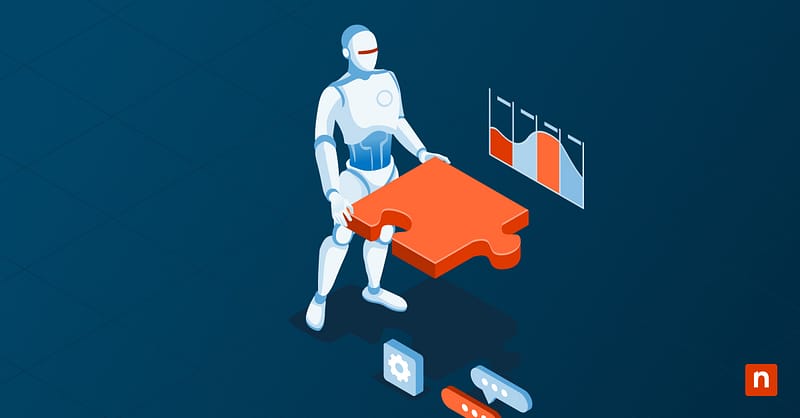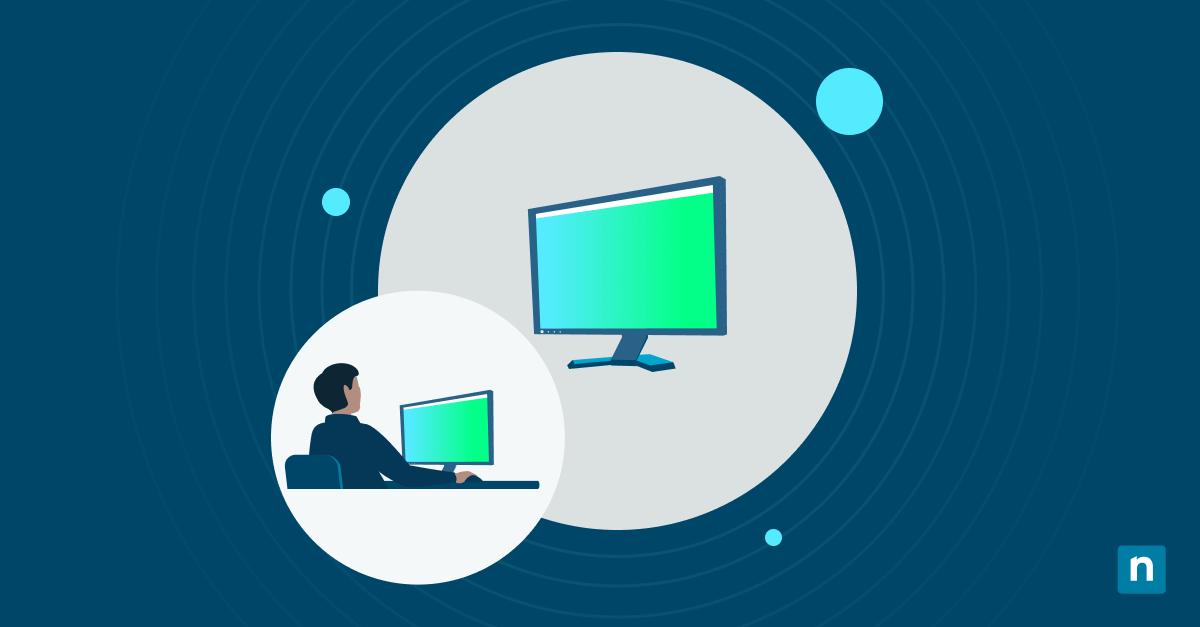Playing whack-a-mole with IT issues in a reactive manner consumes your team’s time and energy. Your servers crash at 2 AM, tickets pile up faster than you can resolve them, and you spend more time firefighting than building strategic value.
Workplace automation with agentic AI transforms this reactive cycle into intelligent, proactive operations that anticipate problems before they occur.
What is workplace automation?
What is workplace automation in the context of modern business operations? It represents the foundation for an intelligent, data-driven approach to business operations that influences how organizations compete and grow. Workplace automation with agentic AI moves beyond simple task automation to create adaptive systems that continuously improve performance while reducing operational overhead.
The business case for agentic AI automation
Most organizations straddle multiple maturity levels at once. It’s not uncommon to see situations where some departments have fully automated workflows while others rely on manual intervention. In this case, teams handle tasks individually and have to respond to issues as they arise.
Smart automation adds conditional logic and integrations between systems and departments, creating more sophisticated workflows and removing a lot of this manual overhead from your employees. Intelligent operations rely on agentic AI to predict issues, adapt responses based on context and continuously optimize performance without ongoing human input.
Workplace automation with agentic AI can be particularly useful for your IT department, which is constantly firefighting technical issues, changes in compliance requirements, and new forms of cybersecurity threats. Using automation can turn your IT department from a cost center into a competitive advantage by reducing your operational costs, improving service reliability, and freeing your skilled professionals to focus on innovation and business growth.
How to automate tasks with agentic AI
If you have ever asked yourself, “how can I automate tasks with agentic AI,” you’ve come to the right place. Any AI-based automation will require a well-thought-out strategy across your critical infrastructure areas, starting with high-impact, low-complexity processes before expanding to more sophisticated operations.
Streamline repetitive workflows
Streamlining repetitive workflows is one of the fastest ways to unlock value with agentic AI. Automating routine IT tasks allows you to free up your team for higher-impact work and reduce errors.
Ways to streamline repetitive workflows include:
- Automate: Instantly handle routine server provisioning, account setup, and software deployment. Escalate only the exceptions.
- Map: Document every manual step in your provisioning workflow to expose bottlenecks and automation gaps.
- Identify: Use agentic AI to spot where human judgment is essential and automate everything else.
- Onboard: Auto-provision accounts, permissions, and devices for new hires based on role and policy.
- Optimize: Let the system learn from patterns, suggest improvements, and flag risks before rollout.
Enhance IT support and ticket resolution
Traditional help desk systems categorize tickets and route them to the next available technician, but agentic AI analyzes ticket content, user history, and system context to predict the best resolution strategy. Configure natural language processing to understand user requests, connect to your knowledge base for automated solutions, and establish escalation rules for complex issues.
The system automatically resolves common issues like password resets, software installations, or network connectivity problems while escalating complex issues to human technicians with detailed diagnostic information.
Automate device and endpoint management
Endpoint management extends beyond basic device monitoring to intelligent health assessment and predictive maintenance. Configure monitoring agents to collect performance metrics every 30 seconds, establish baseline performance patterns for different device types, and set up automated remediation workflows for common issues.
Agentic AI can be incredibly powerful. The technology has the ability to analyze device performance patterns, software usage, and security events, and can even predict hardware failures. The system automatically updates software during maintenance windows, adjusts performance settings based on activity patterns, and implements security patches based on device criticality and user requirements.
Improve compliance and security monitoring
Agentic AI correlates security events across multiple systems, identifying subtle patterns that indicate advanced persistent threats or insider risks. The system continuously validates compliance configurations against frameworks like SOC 2 or ISO 27001, automatically remediates policy violations, and generates detailed reports for auditors.
When security incidents occur, intelligent automation isolates affected systems quickly, collects forensic evidence and implements containment measures while notifying appropriate personnel with detailed incident analysis and recommended response actions.
Common workplace automation challenges and solutions
Implementation success depends on addressing practical challenges that every organization faces when deploying workplace automation with agentic AI. Understanding these obstacles and their solutions helps you prepare for a smoother transition while building stakeholder confidence in the initiative.
Integration with existing systems
Integrating agentic AI with existing systems can be challenging, especially when dealing with legacy infrastructure. Success depends on understanding each system’s integration capabilities, addressing compatibility gaps, and building reliable connections that support automation at scale.
Ways to integrate with existing systems include:
- Catalog systems: Document all current systems and their integration methods (REST, SOAP, DB access, etc.).
- Prioritize wins: Focus on systems with high automation potential and low integration friction.
- Bridge legacy gaps: Use middleware like MuleSoft or Azure Logic Apps to connect old and new systems.
- Standardize: Create reusable integration patterns and components to avoid redundant builds.
Version APIs: Plan for system evolution by managing API versions to ensure long-term stability.
Data security and privacy concerns
Intelligent automation requires access to sensitive data across multiple systems, raising legitimate security and privacy concerns. Implement zero-trust security models that verify every access request, encrypt data in transit and at rest using AES-256 encryption, and maintain detailed audit logs for all automated activities. Configure role-based access controls that limit system permissions to the minimum required levels. Establish automated credential rotation every 90 days and monitor for unusual access patterns.
Change management and employee adoption
Employees often resist automation initiatives due to concerns about job security or increased complexity. Address these concerns through transparent communication about automation goals, comprehensive training programs, and clear career development paths that emphasize higher-value activities.
Make sure to involve key stakeholders in automation design and implementation, incorporating their expertise and addressing their specific concerns. Create automation champions within each department who can provide peer support and demonstrate success stories.
Scaling automation across departments
Expanding automation beyond IT requires understanding different departmental needs, processes, and success metrics. Develop governance structures and establish center-of-excellence teams that combine technical expertise with business process knowledge. Create standardized automation frameworks using tools like Microsoft Power Platform that can be adapted across departments.
Measuring success and ROI from automated workflows
As you move forward with workplace automation, it’s important to ensure your efforts deliver real, measurable value. Track key metrics such as reduction in manual effort, faster ticket resolution times, improved system uptime, and cost savings from decreased operational overhead. Regularly review these outcomes against your initial goals to identify areas for further optimization. Sharing clear, data-driven results helps build stakeholder confidence and supports continued automation initiatives.
Ready to transform your IT operations?
See firsthand how NinjaOne streamlines workflows, reduces operational overhead, and empowers your team to focus on what matters most. Start your journey to intelligent IT operations. Try it now for free with NinjaOne.








